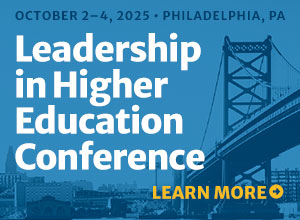5 Reasons to Keep Loving Your Job in Admissions
In 2000 I wrote an article for the Journal of College Admissions called “Admissions: The Job You Keep.” It was a tribute to the difference my admissions counselor made when I was choosing a college in the early 1990s and a reflection on everything I appreciated about the admissions profession after three...
Tailoring the Admissions Experience
I remember that when I started my first job as an admissions counselor, one of the interview questions was, “Do you see the role of admissions counselors more as counseling or as sales?” I had no experience, so I really didn’t know the right answer. Since the word “counselor” was...
Capacity-building through International Programs
How do universities continue to build their capacity during a time period of decreasing enrollments and demographic change? As enrollment managers struggle to maintain strong student volume and achieve degree attainment goals, it is critical to build broader and deeper channels for both attracting students and aligning new enrollment with...
How to Build Emotional Intelligence in Emerging Leaders
Part of the responsibility of managers in the enrollment field is to prepare developing professionals for the future. While there are certainly opportunities for formal professional development through national and regional conferences, these opportunities are not sufficient for forming well-rounded leaders. Although budget constraints often limit our ability to send...
Student Retention: An International Perspective
On a two-week recruitment trip to China and Japan, I asked our university partners in both countries how they addressed problems of retention. In both cases, my question elicited a blank look. Upon further questioning, I realized that retention is not the same type of challenge we experience at US...
The Flywheel of Retention
After sagging for several years, our four- and six-year graduation rates ticked upward in 2015. Our fall-to-spring retention rate was up roughly two points, and our preliminary fall-to-fall rate followed suit. The number of students on probation dropped by about one-quarter. All these improvements are having an impact on our...
Higher Education as a Public Good: A Perspective from Iceland
In Iceland, public universities are supported by the state while private universities are supported by a combination of state funds and partnership support from industry. Iceland is trying to figure out how to straddle two concepts of higher education: the “public good” model of most Nordic countries and the “private...
Moving Beyond Majors
As I sat looking at data for the newly enrolled students in our incoming class, comparing it with institutional and national SAT data, I wondered, is the concept of a major becoming obsolete? Our colleges and universities are built around them. For generations, faculty have been training in one discipline...










